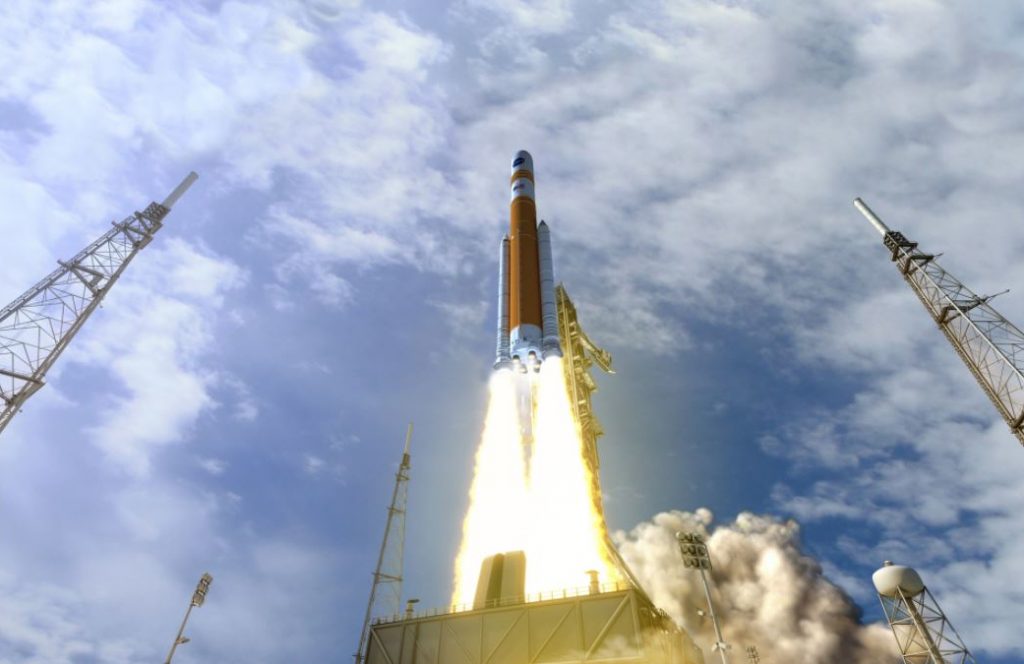
Joe Biden will have a lot on his plate after his inauguration as US president on 20 January 2021. The most pressing concern will be dealing with Covid-19 and establishing a path back to economic growth. There are a host of other domestic challenges to address, as well as a complex and increasingly adverse international security environment, so space policy probably isn’t high up on his to-do list. Yet, it’s not a policy area he can ignore. Important decisions must be made soon on a number of key space-related issues.
Biden has already signalled that he sees NASA’s role as having a greater focus on addressing the global challenge posed by climate change. That would certainly mean investing more in new satellites and scientific research to monitor changing weather patterns and rising sea levels and to deal with climate-change-induced extreme weather. A more ambitious, parallel approach would be to invest in establishing a permanent human presence in space, including on and around the moon, to support the development of space-related renewable energy technology, such as space-based solar power.
Thinking big, and going boldly, would represent a major shift away from the Trump administration’s destructive defunding of NASA’s climate-science activities. It’s ironic that investing in science and supporting a wider role for NASA in dealing with climate change reinforce the case for the Trump administration’s Artemis project to return to the moon this decade.
It seems clear that under Biden, the proposed landing of the first American woman and next man on the lunar south pole will shift from what was a clearly politically linked date of late 2024—which would have marked the end of a second term for Donald Trump—to sometime later this decade. The 2024 target was always going to be problematic for NASA without a big boost in congressional funding, which is extremely unlikely with the US economy already weakened by the pandemic. Nor are key vehicles—notably the lunar lander, and, the SLS heavy-lift launch vehicle—likely to be ready in time for a late 2024 landing. Biden may decide to rely more on commercial companies, and with SpaceX having just done a mostly successful a 15-kilometre hop test for its heavy-lift fully reusable ‘Starship Super Heavy’ booster, there may be less of a need for NASA’s beleaguered and expensive Space Launch System.
Getting to the moon should remain a key objective for, but it would be a huge mistake to return for just flags and footprints. The Trump administration’s plan to establish a sustained human presence on the surface to gather resources, and NASA’s spearheading of the Artemis Accords to manage lunar resources fairly, were the right approach, in that they recognised the moon and near-earth asteroids as a resource base to sustain a permanent human presence in cislunar space for economic activity.
Biden needs to sustain these efforts because a permanent presence on the moon, and the development of lunar mining, can support economic and manufacturing activities that transform our approach to space. This could include novel new technologies, manufactured in space from space-based resources, that ultimately contribute towards a carbon-free global ‘green economy’.
In an earlier article, I talked about the possibility of space manufacturing opening up new supply chains. If Biden wants to take a visionary, ‘green energy’ approach to reducing the use of fossil fuels on earth, he could do worse than allow NASA and other government agencies to invest in research and development towards space resource utilisation that was at the heart of the Trump approach. The key goal should be a sustained human presence in space that expands economic potential, rather than just space exploration for the sake of national prestige.
The Artemis initiative was always about using the moon as a stepping stone to prepare for human missions to Mars by the late 2030s. That goal is much more challenging than simply a return to the moon and is uniquely suited to international collaboration. Biden’s approach should be to continue the long-term gaze towards Mars but emphasise opportunities for a multinational mission. He should set a firm date for landing on Mars to form the base of a coherent strategy. An option is 2039—70 years after Apollo 11’s landing on the Sea of Tranquility.
Finally, what to do about the US Space Force? This was a key component of the Trump administration’s approach to space and it’s not likely to be dissolved by Biden. The reality is that space is highly contested and is already regarded as a warfighting domain in which US and allied defence and security interests are threatened by growing Chinese and Russian counterspace capabilities. Ditching the space force wouldn’t convince Beijing or Moscow to end their development of advanced anti-satellite systems or to eliminate their space-oriented military branches (the People’s Liberation Army Strategic Support Force and the Russian Aerospace Force, both of which pre-dated the US Space Force). The Biden administration needs to shape a clear space deterrence policy and space-defence capability, and the US Space Force is ideally placed to lead that process.
A key debate in Washington is where the US Space Force should be focused, the ‘brown water’ region of low-earth orbit to geostationary orbit (LEO to GEO) out to 36,000 kilometres or, over a longer timeframe, in the ‘blue water’ region of cislunar space. That debate needs to be settled in this administration. That would then shape organisational mission, funding, doctrine and capability priorities. The sensible approach for Biden is to focus the US Space Force on the brown-water LEO to GEO region now but plan for it to operate further afield in case a major-power security threat emerges in coming decades.

